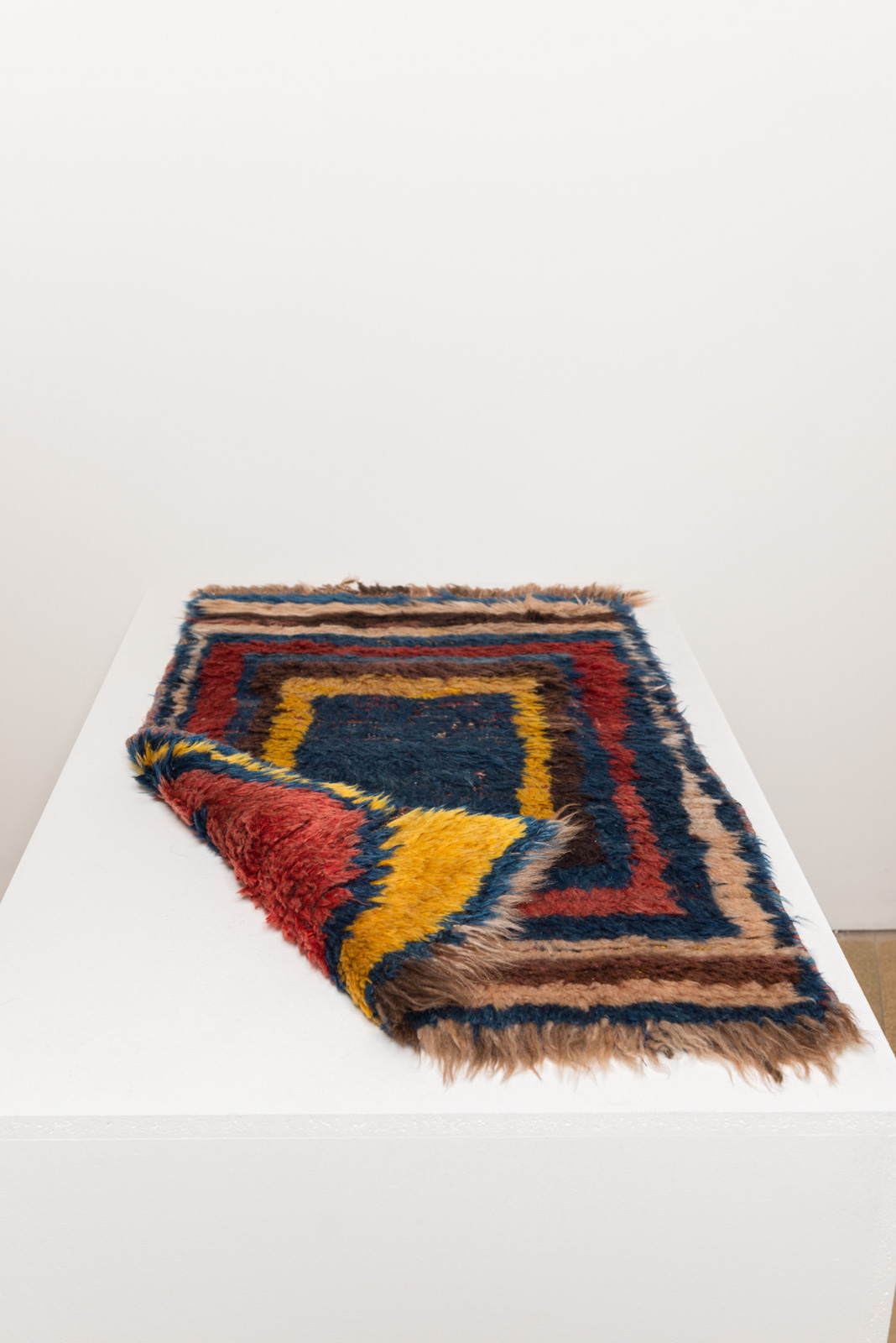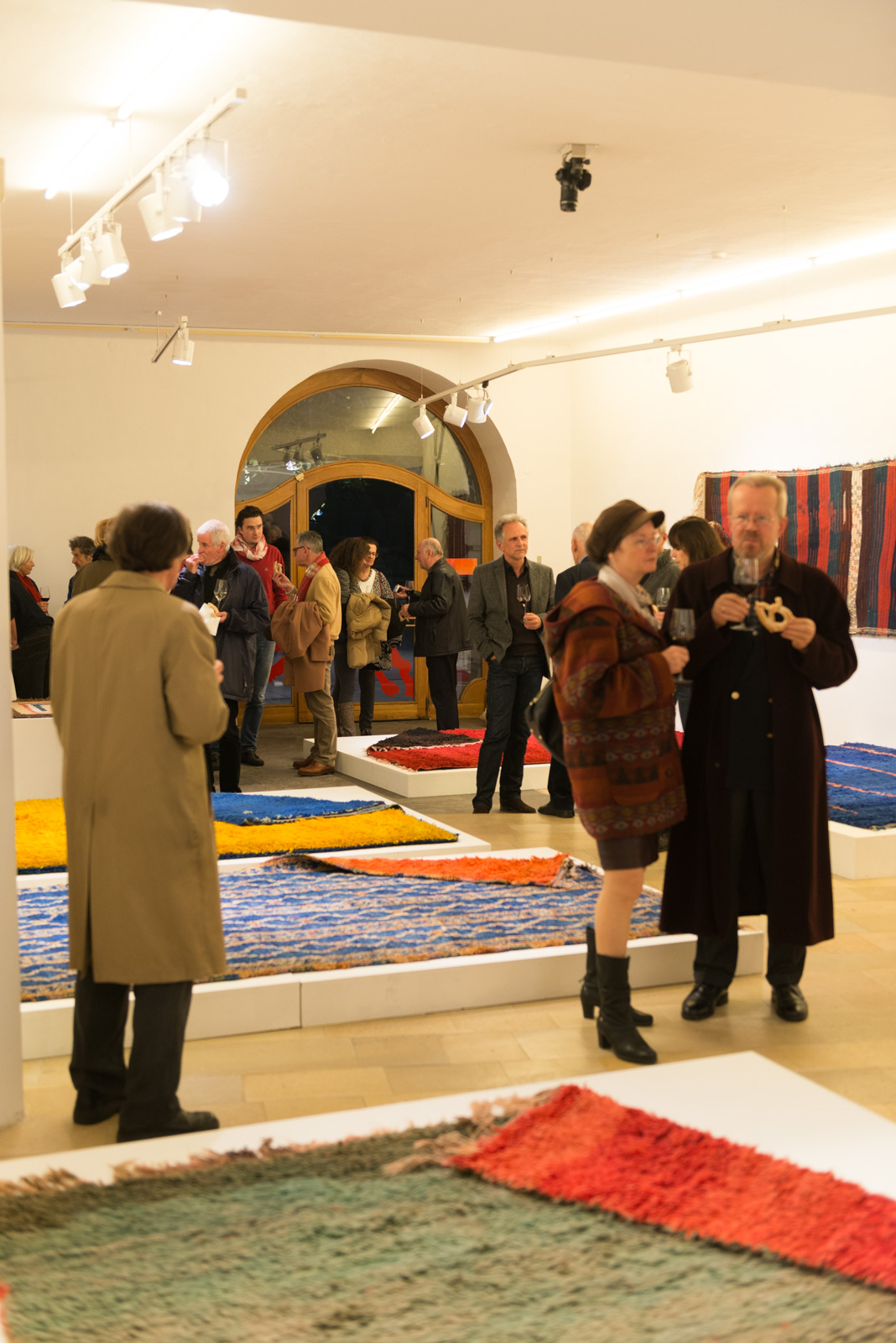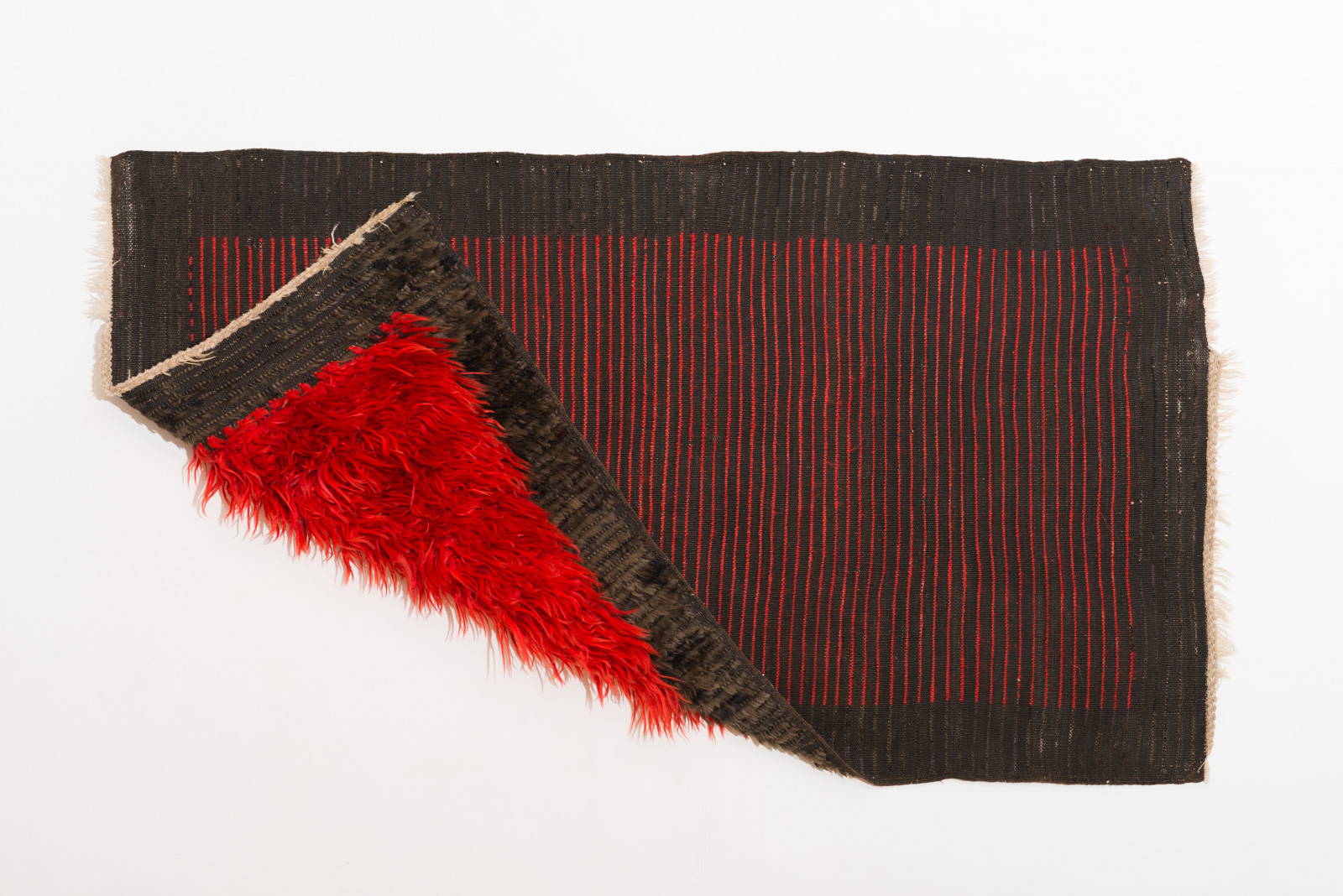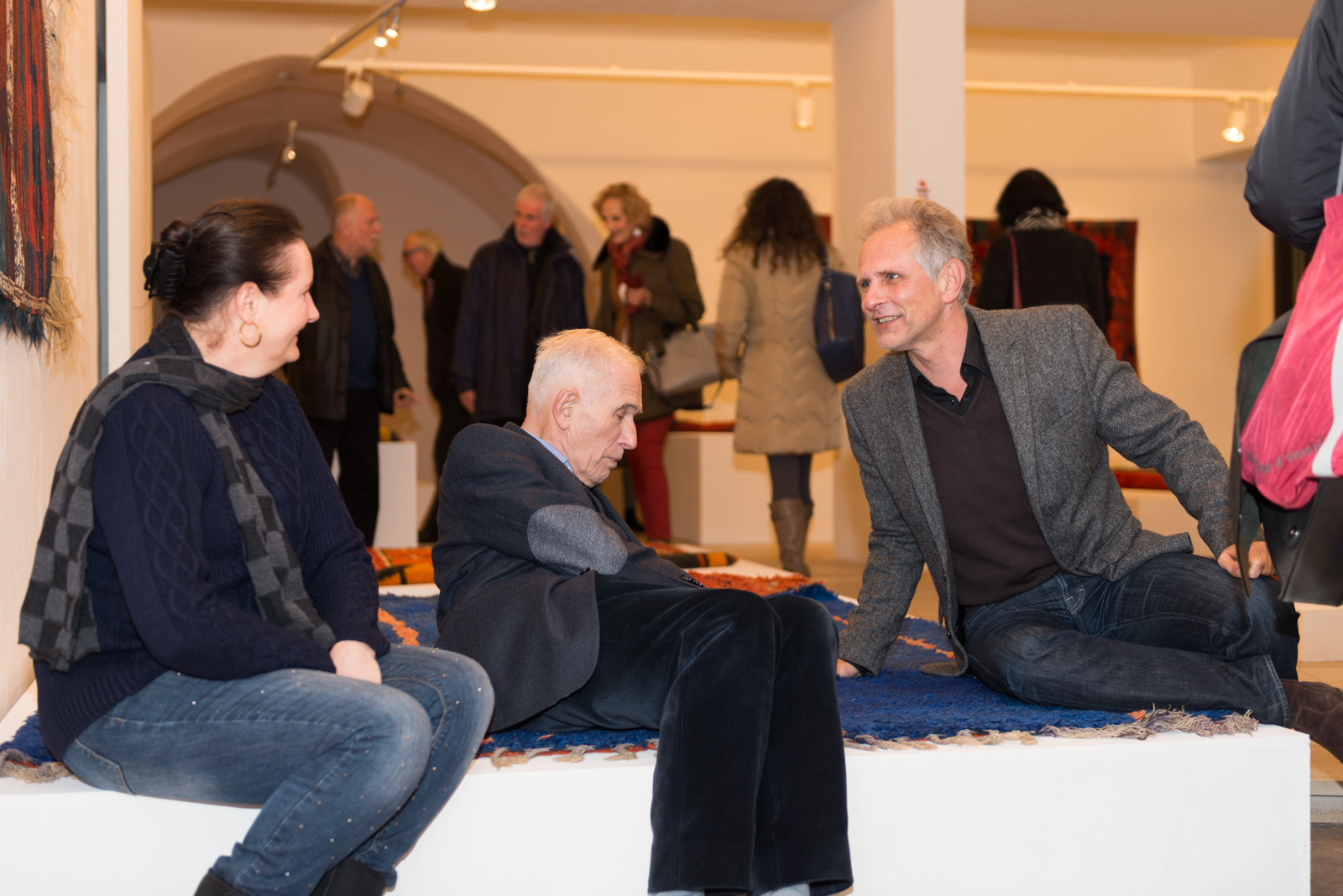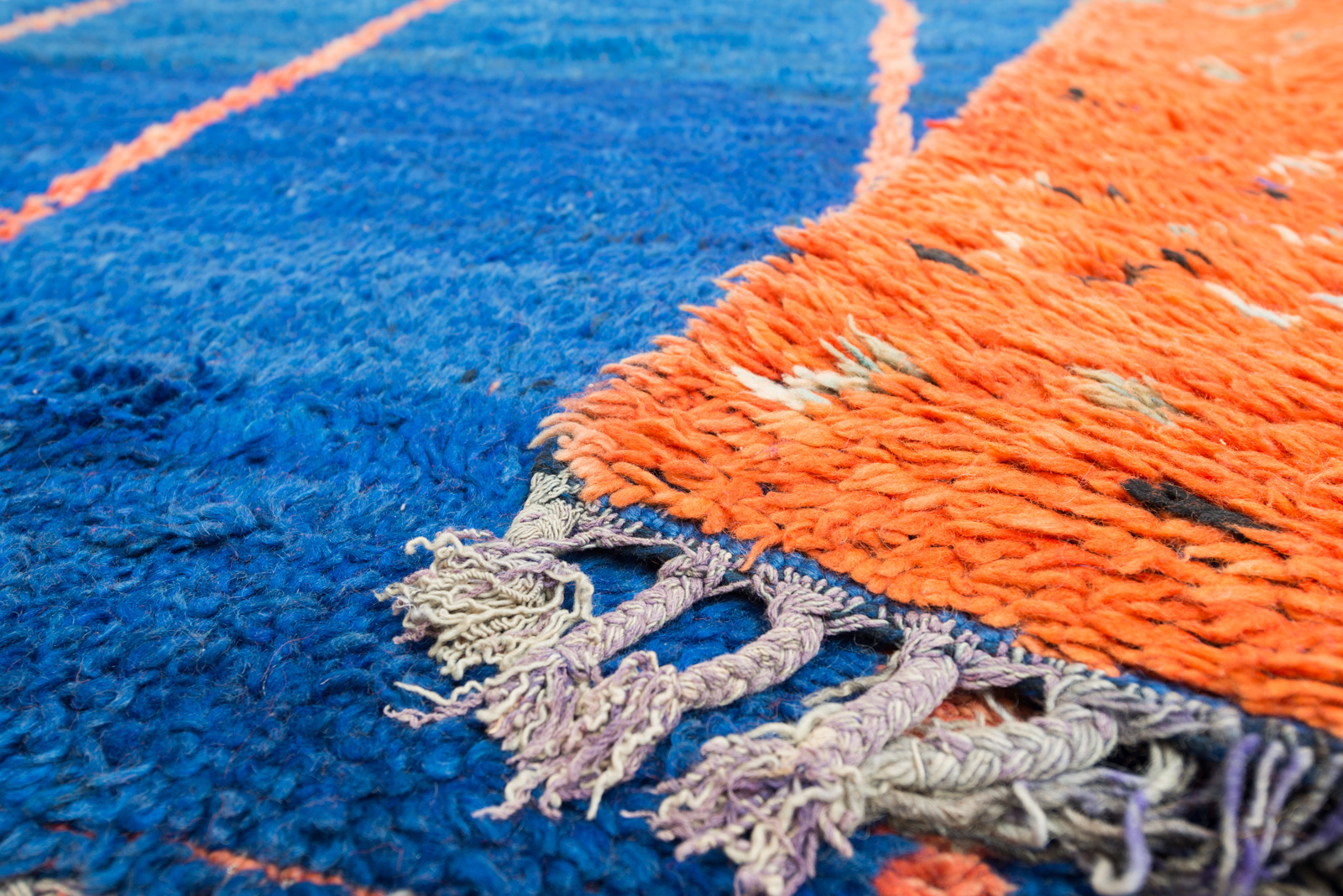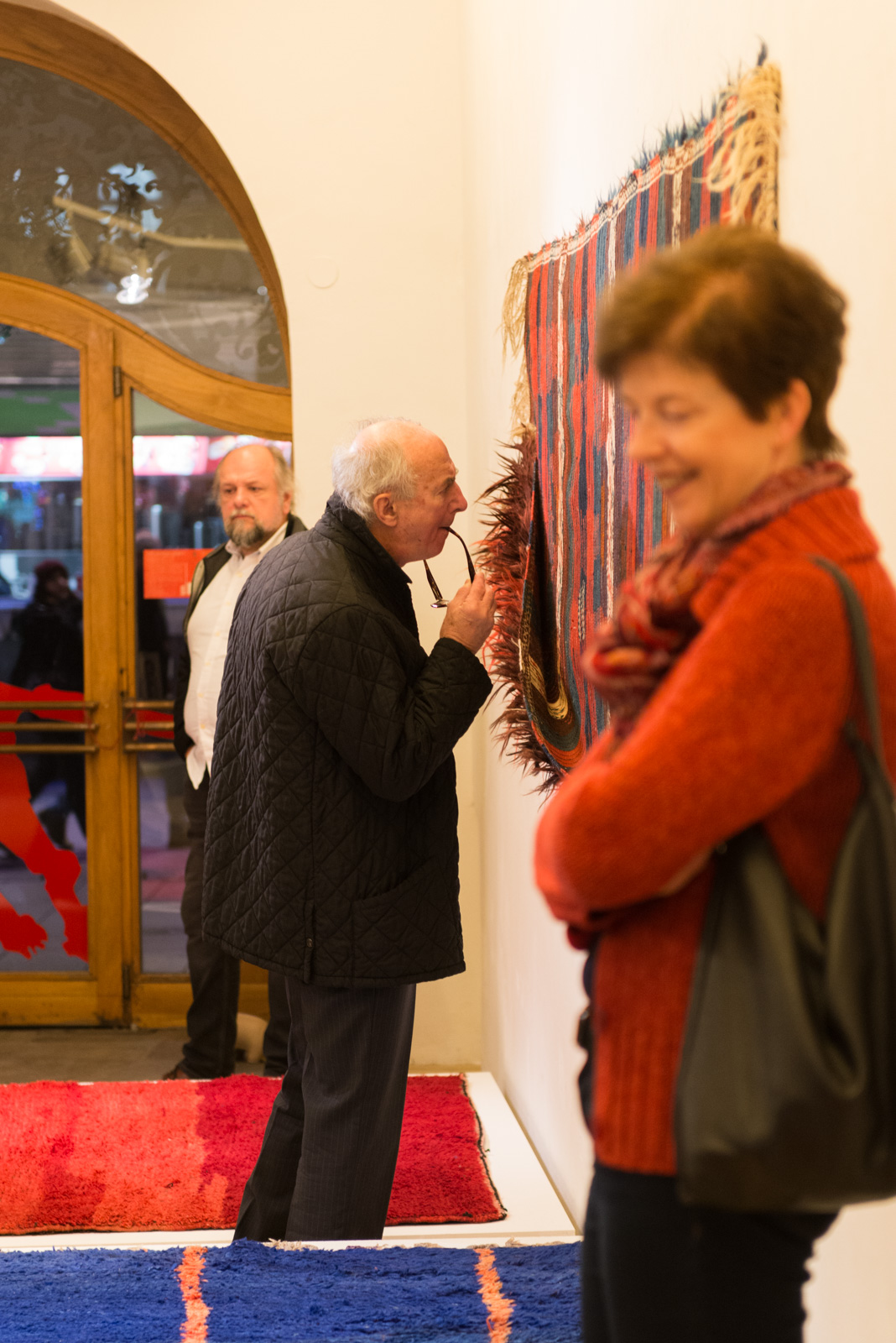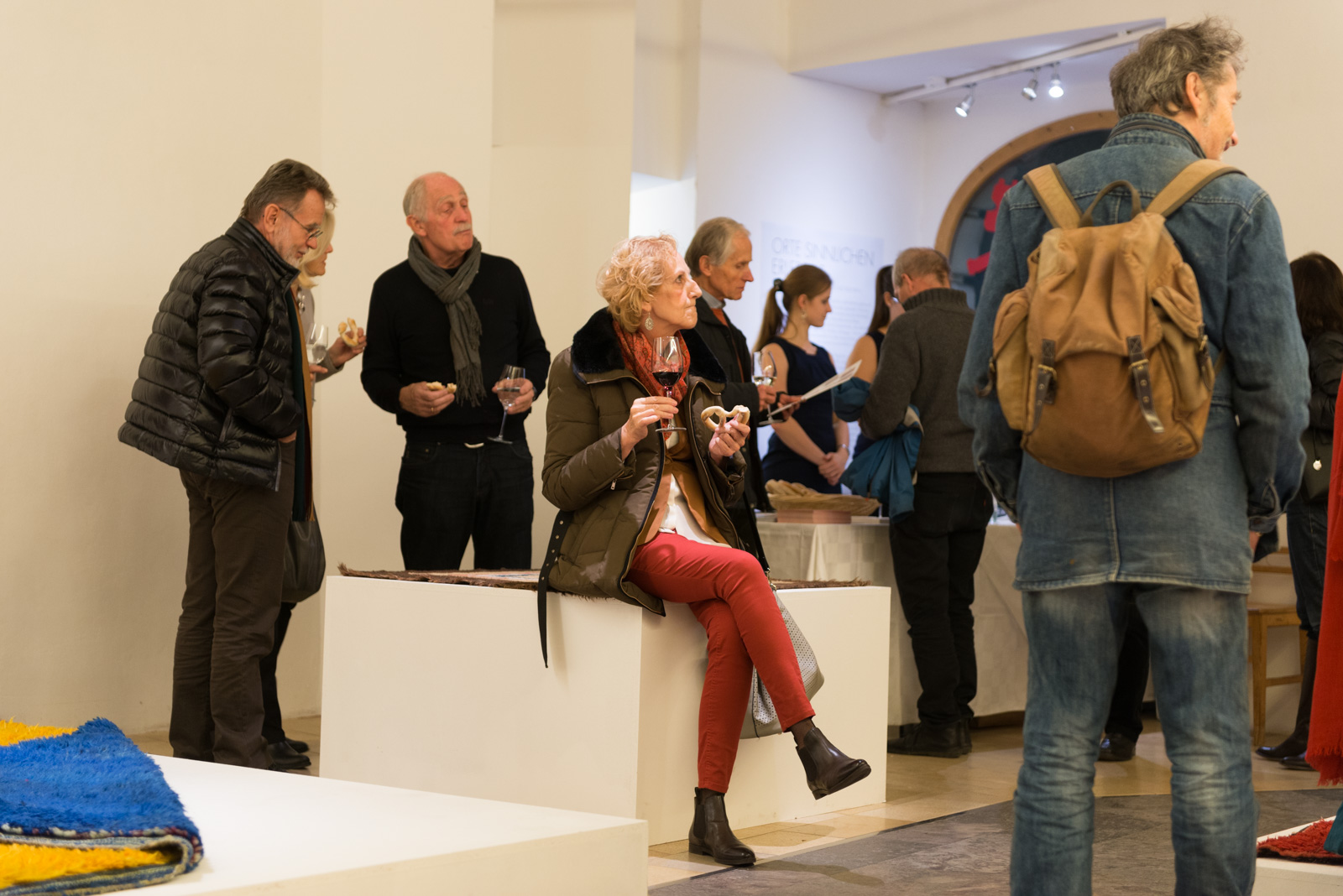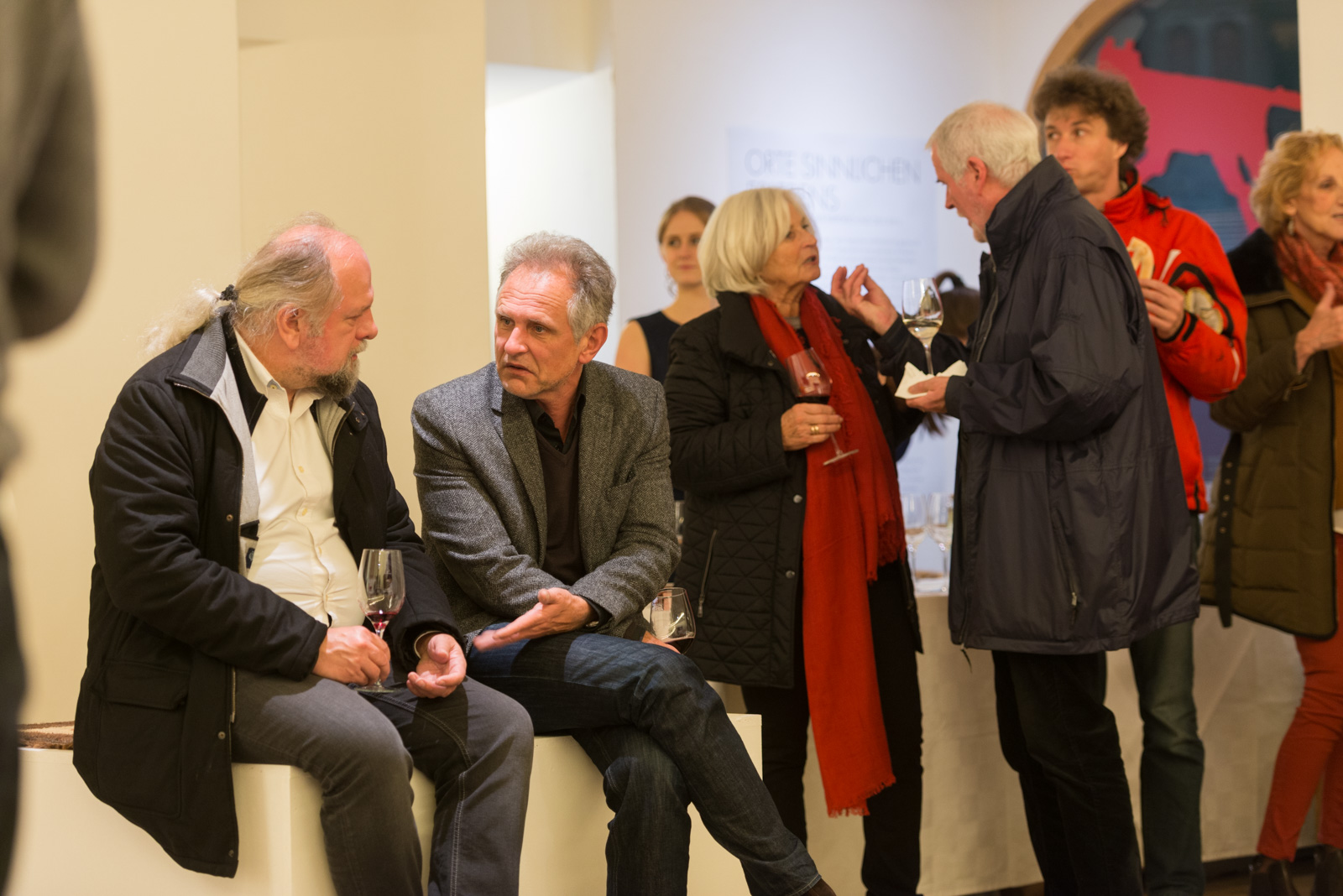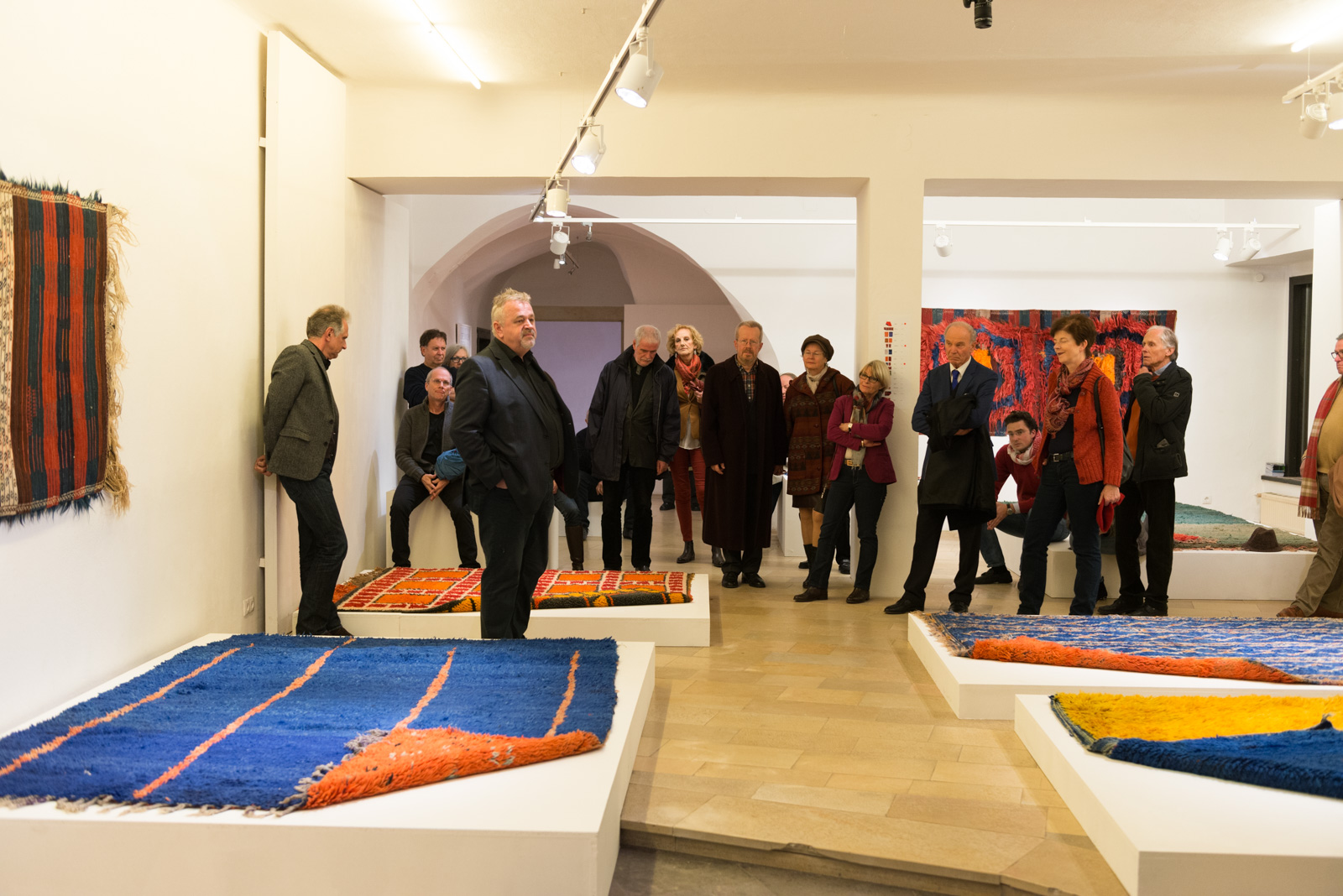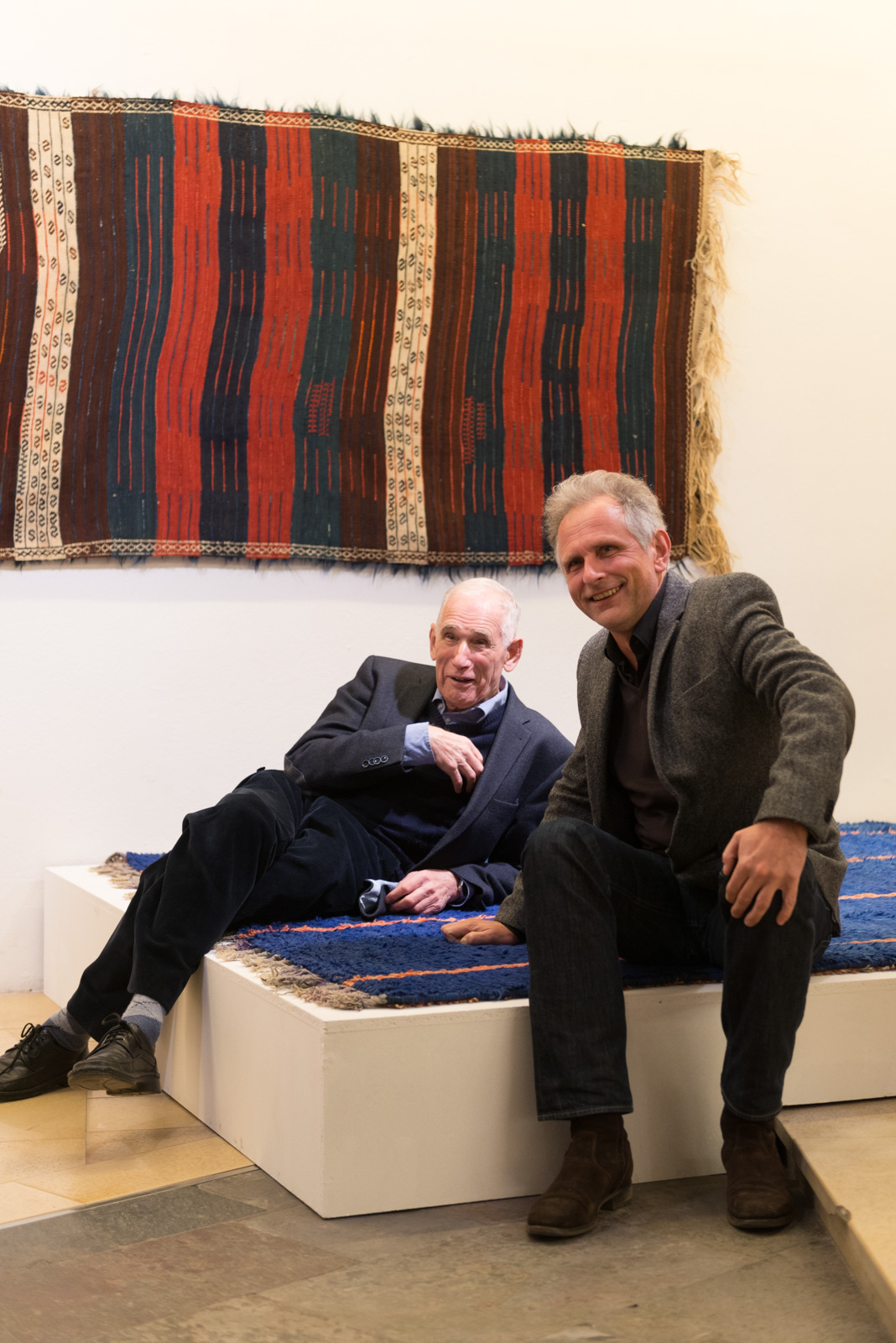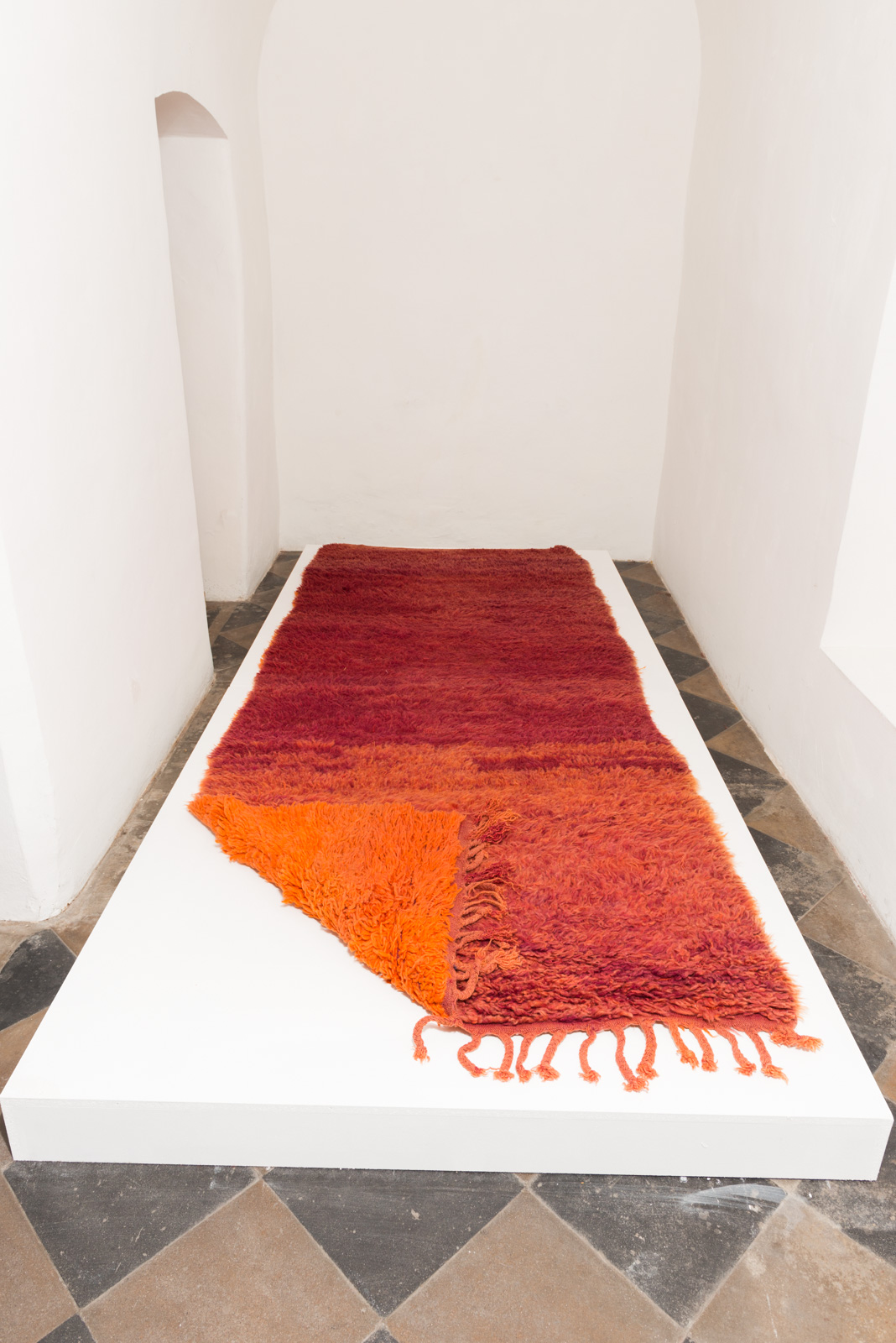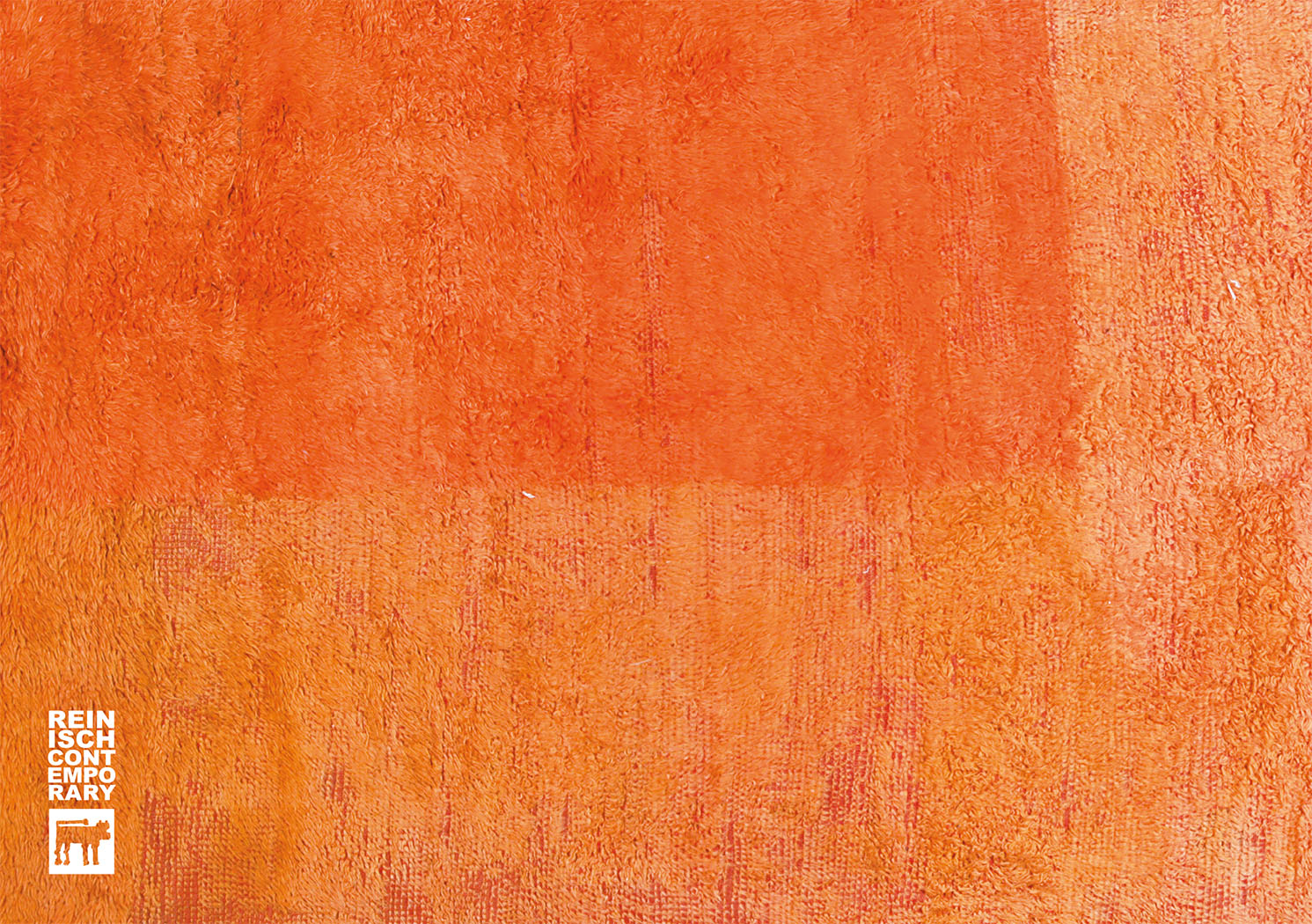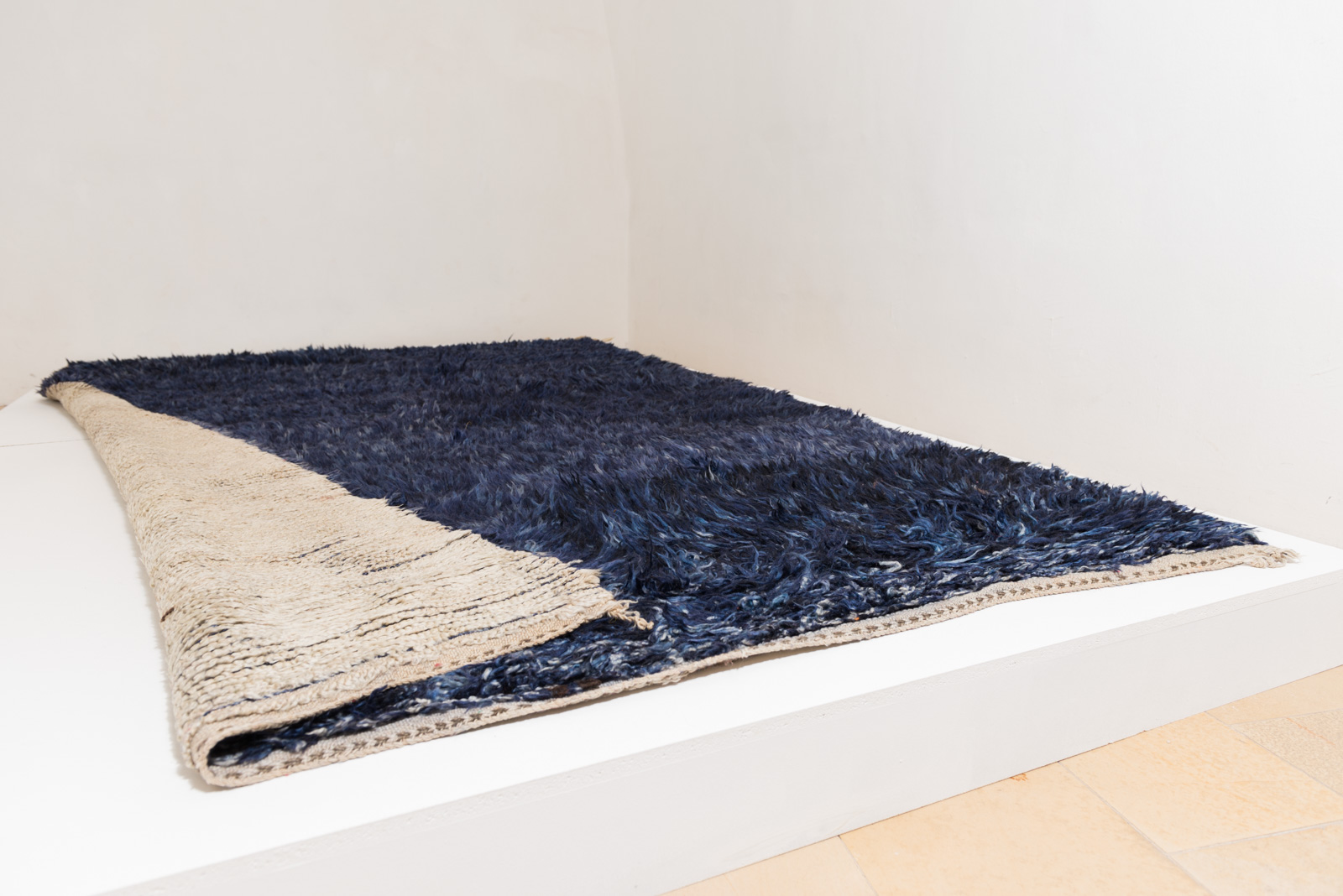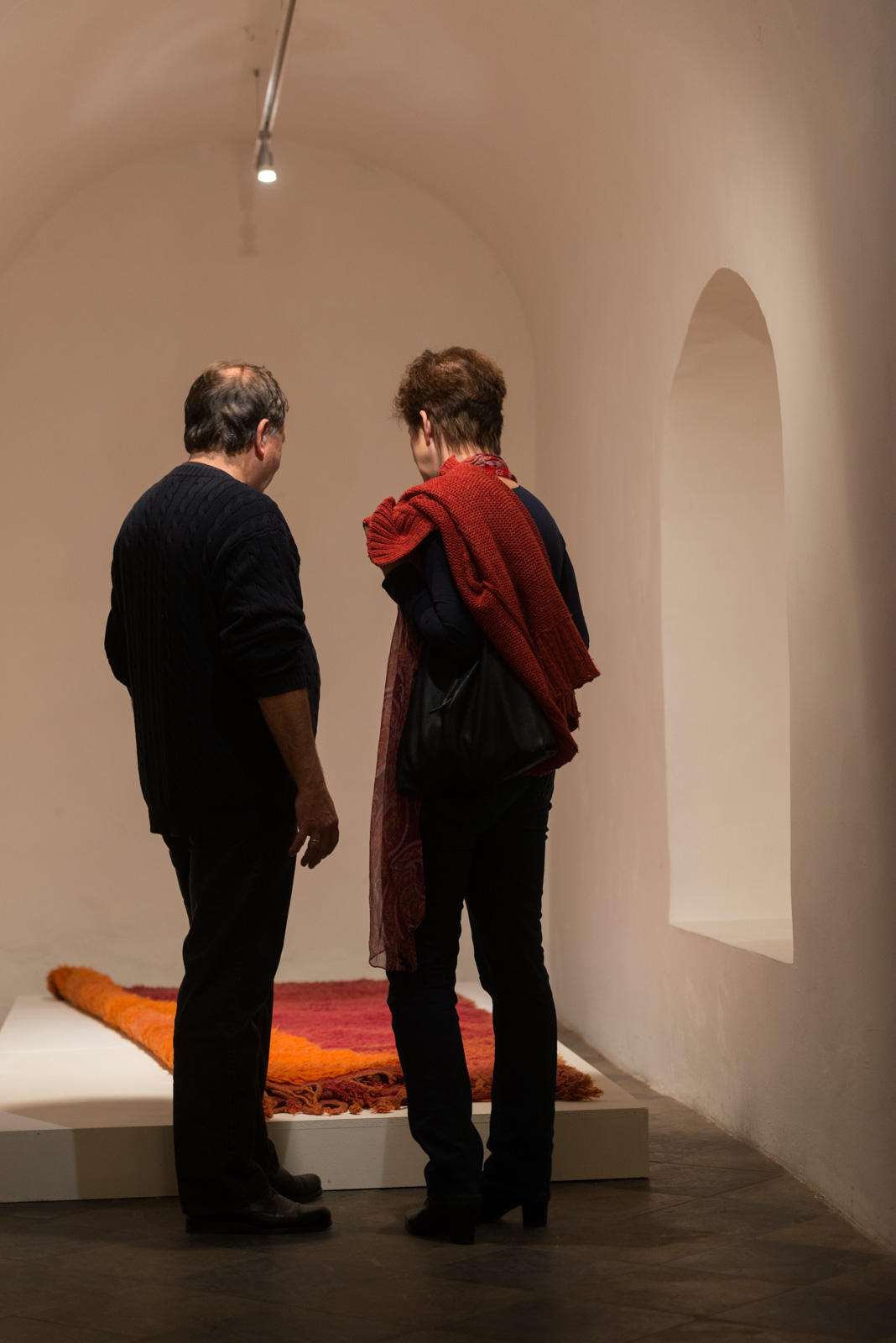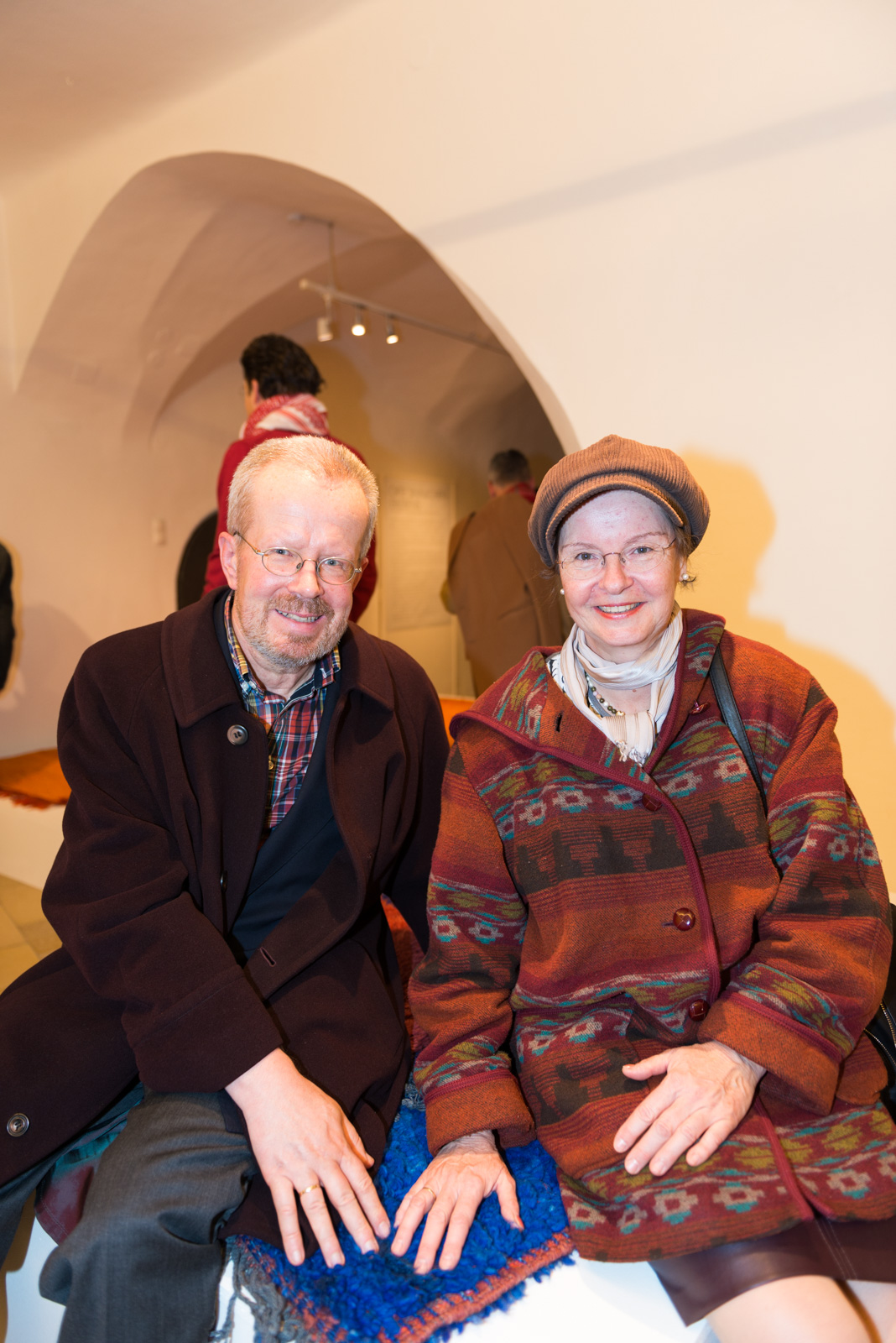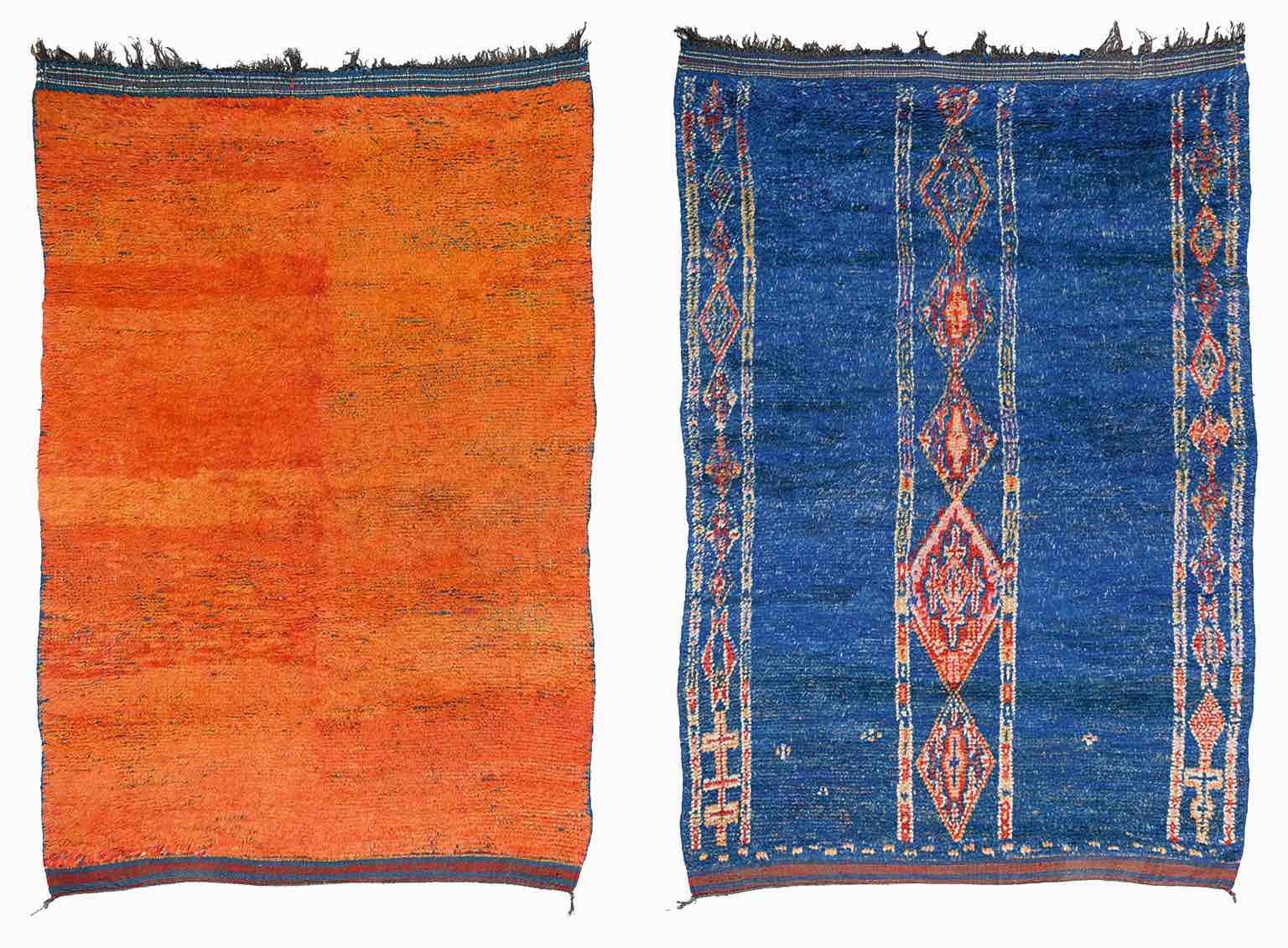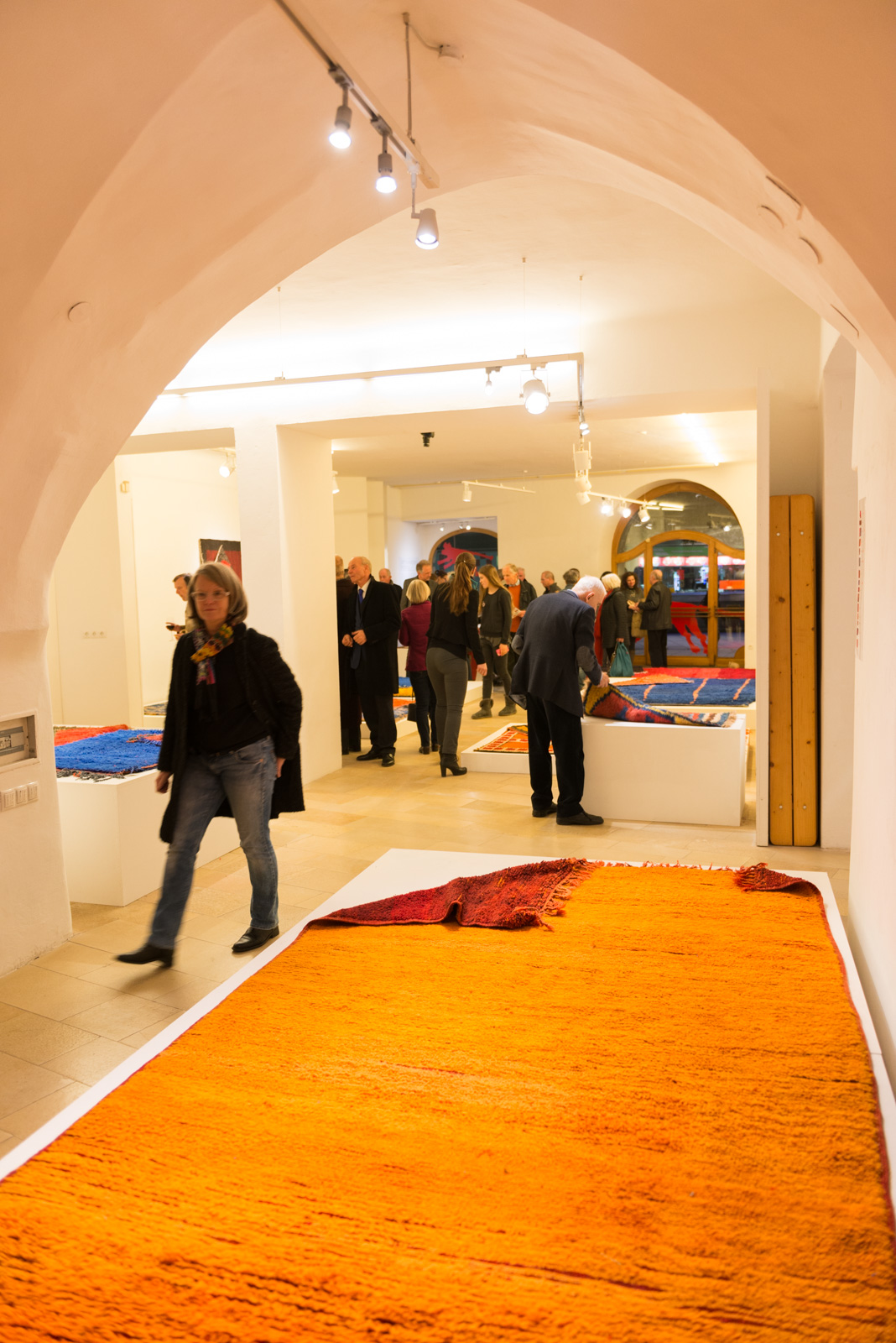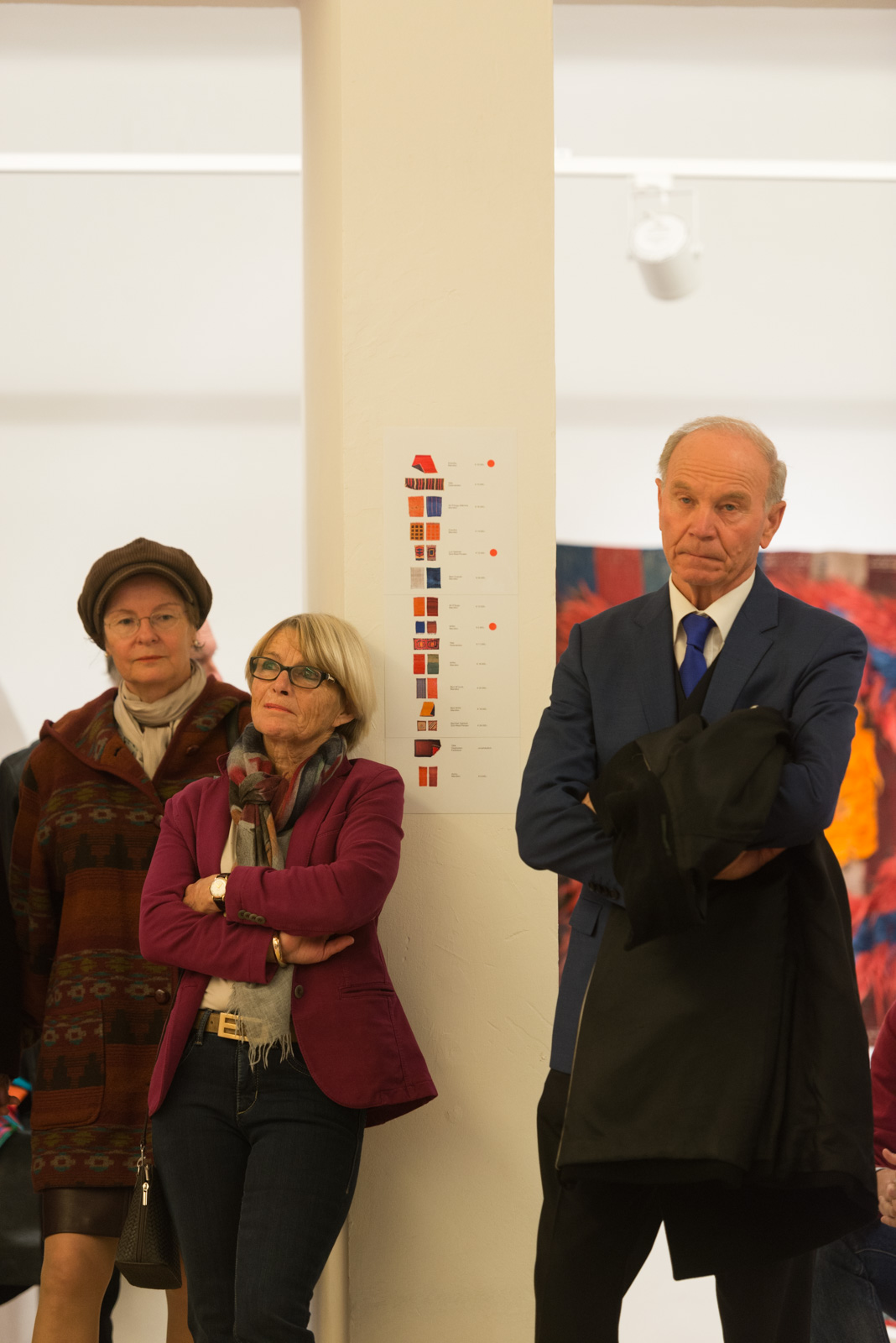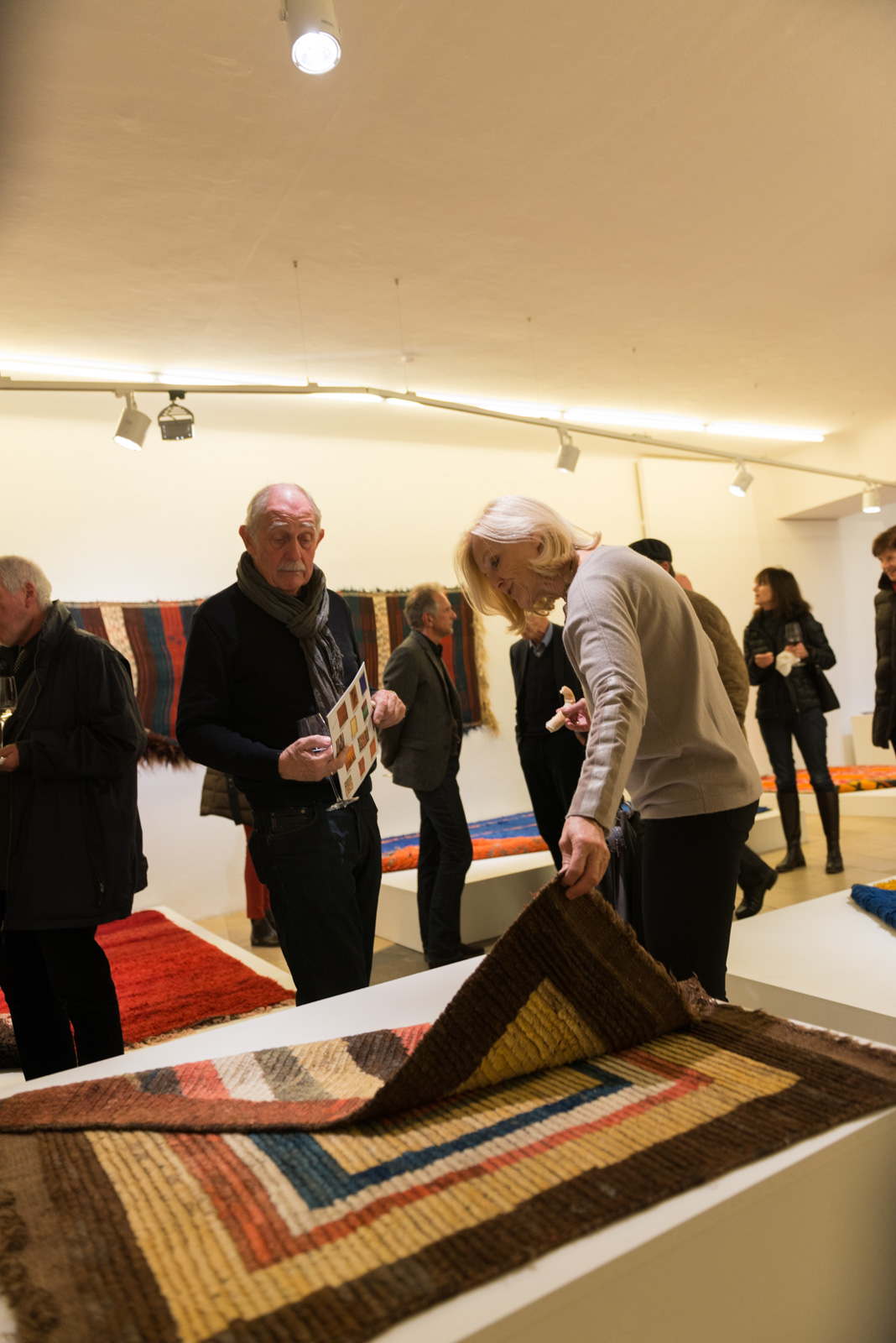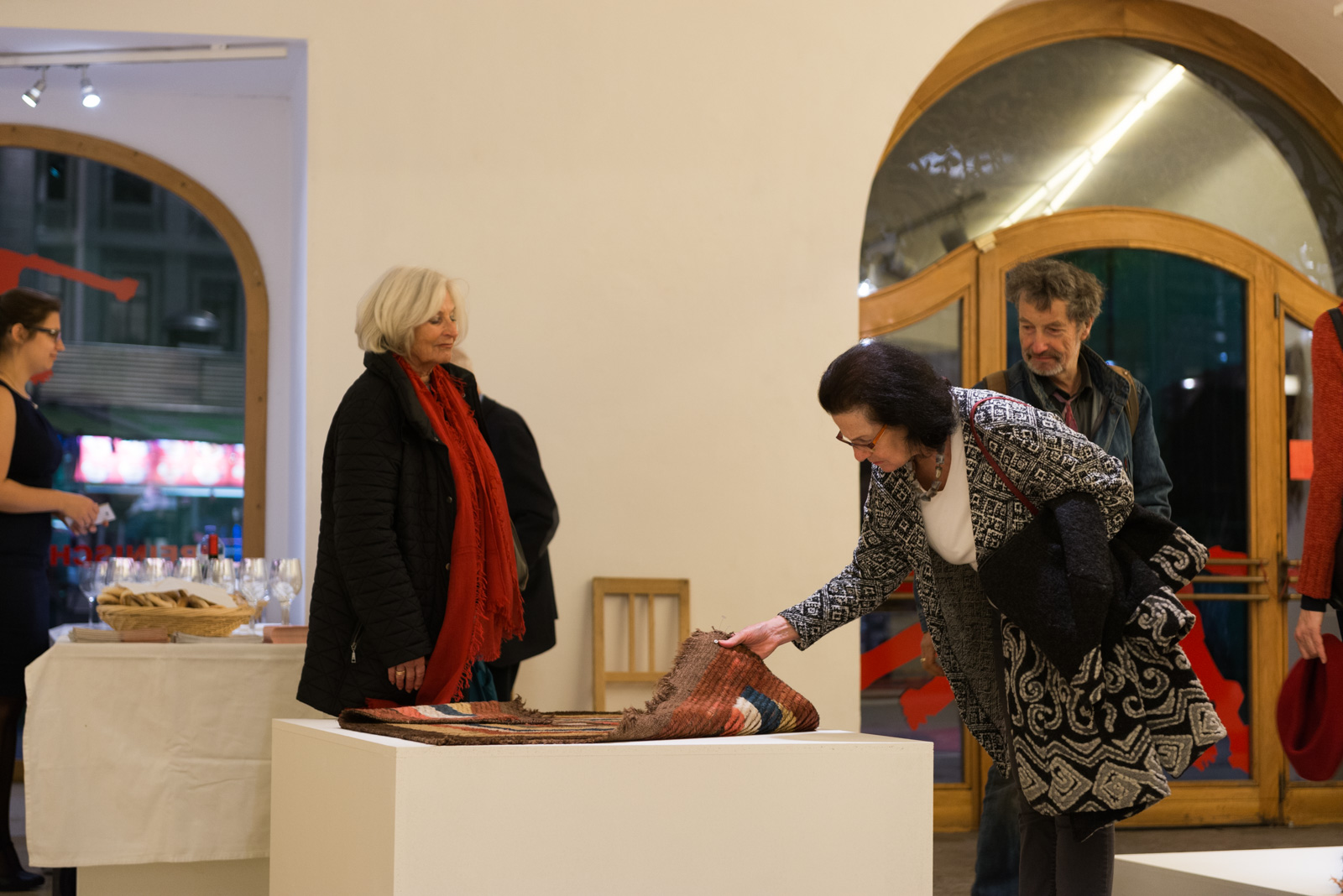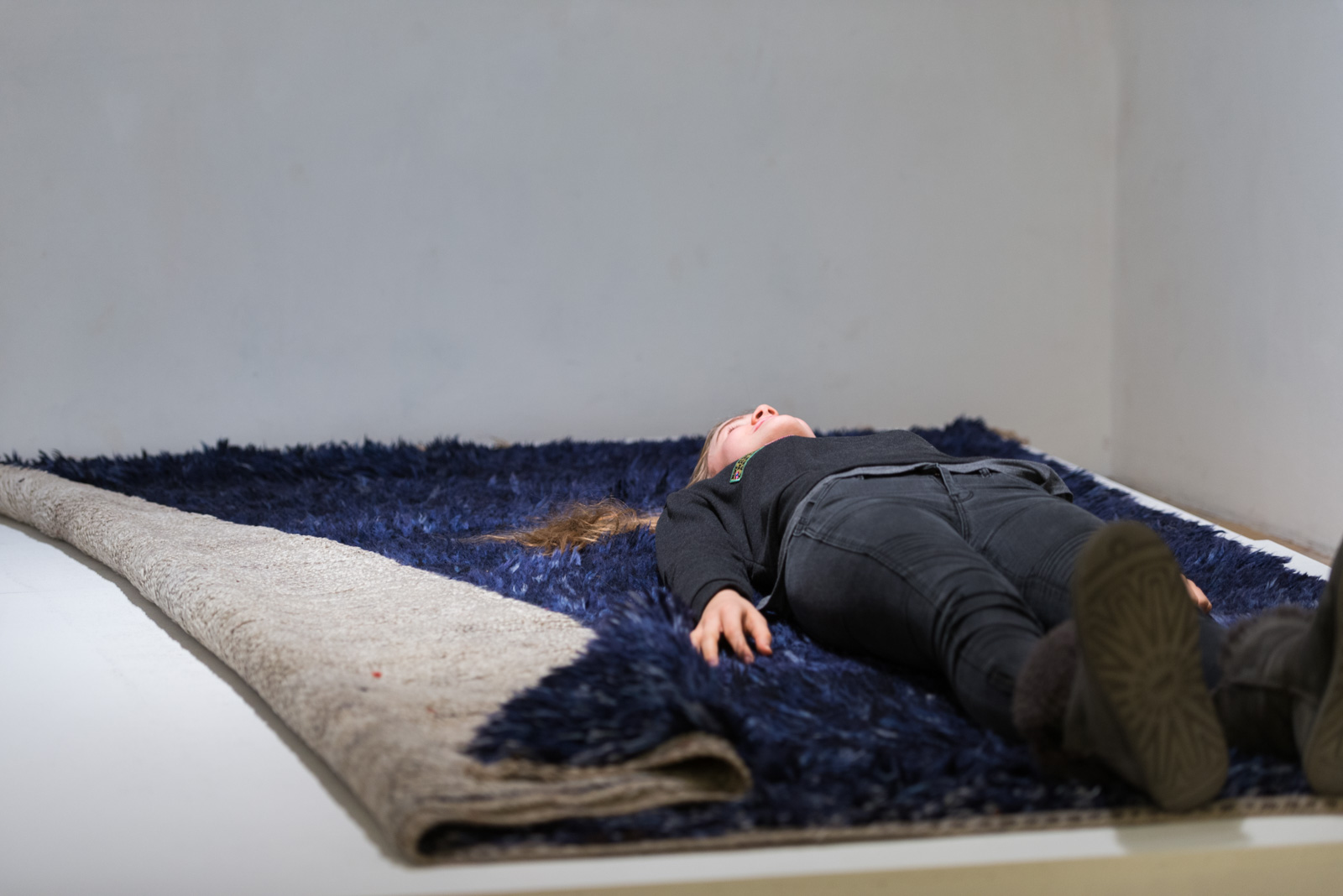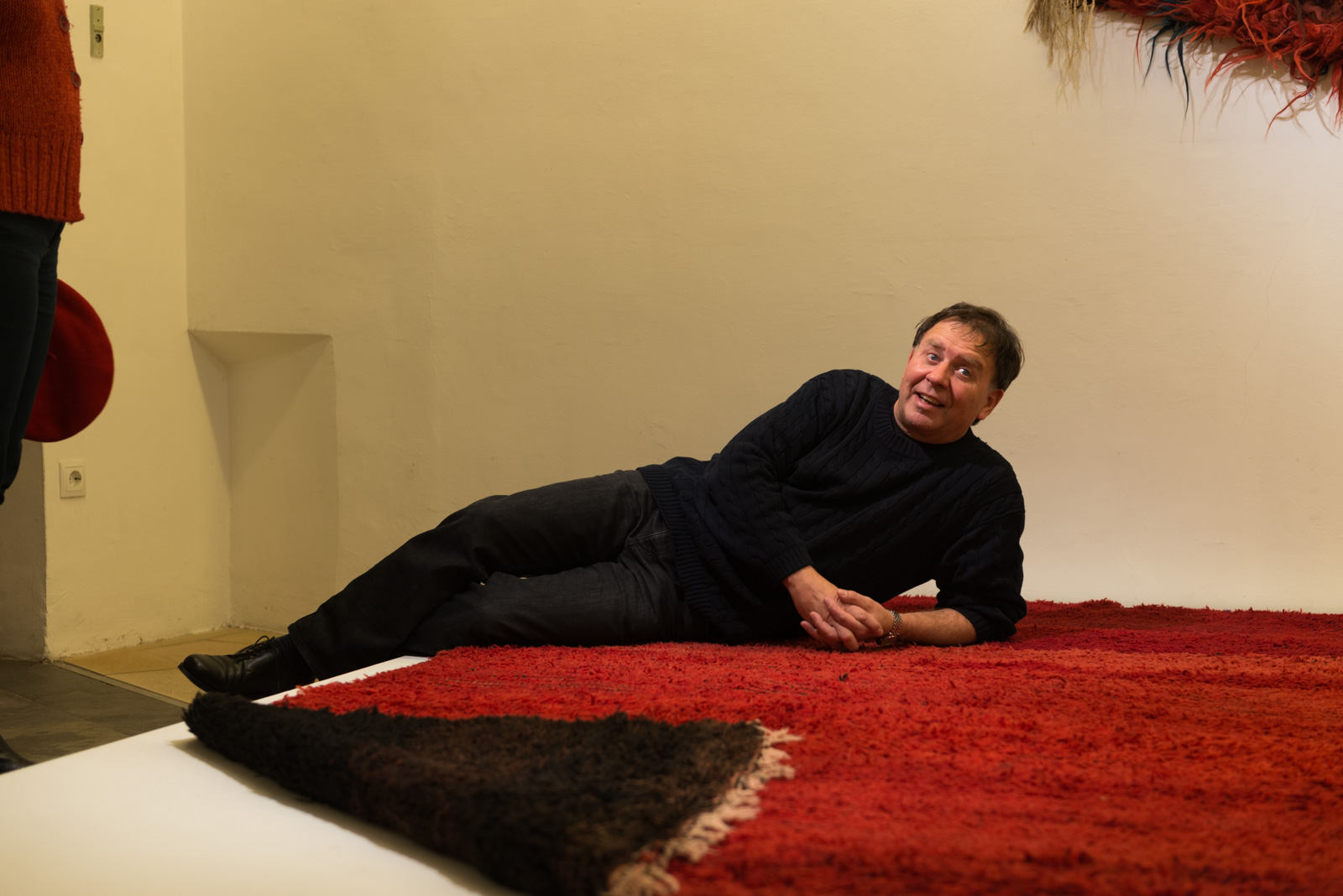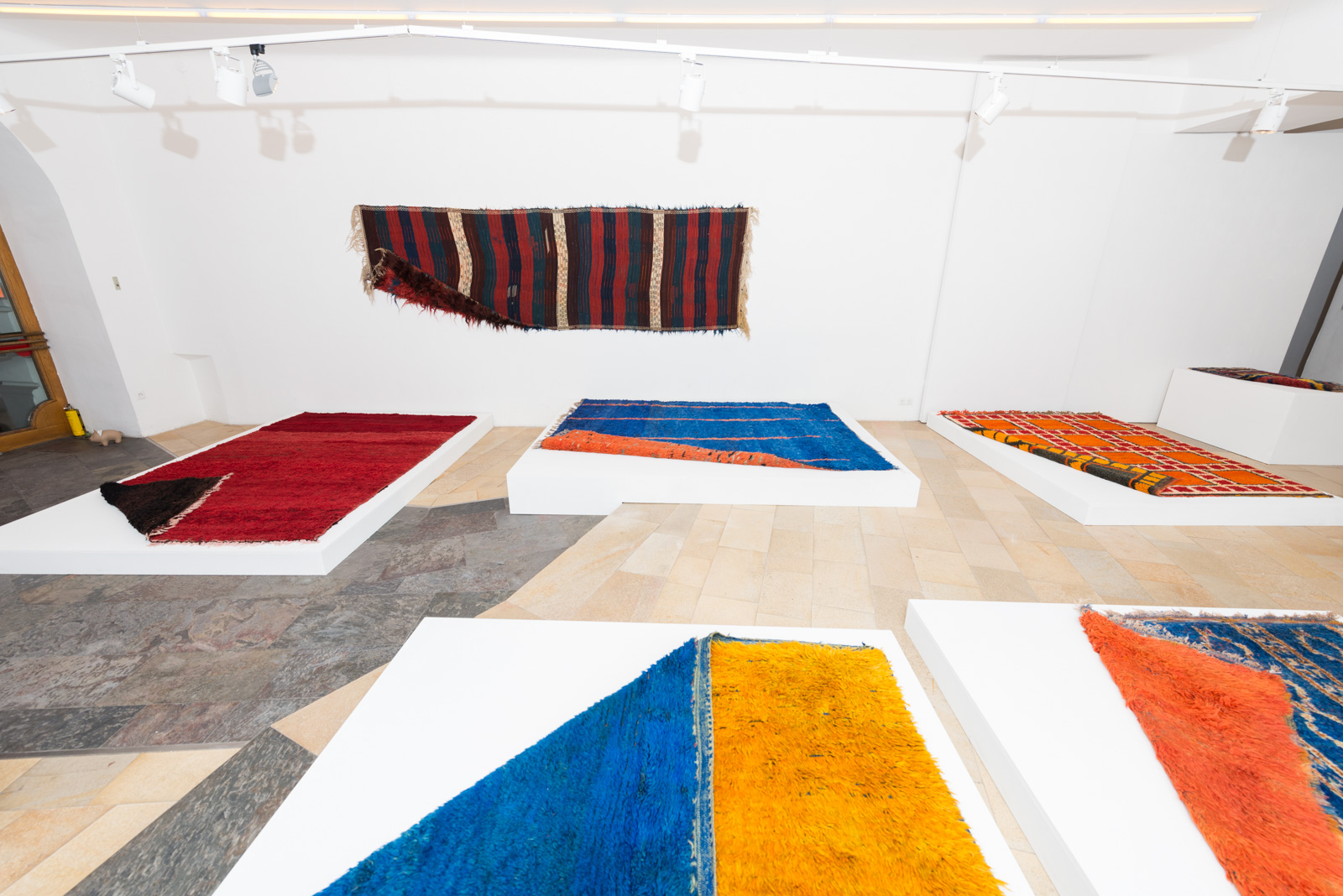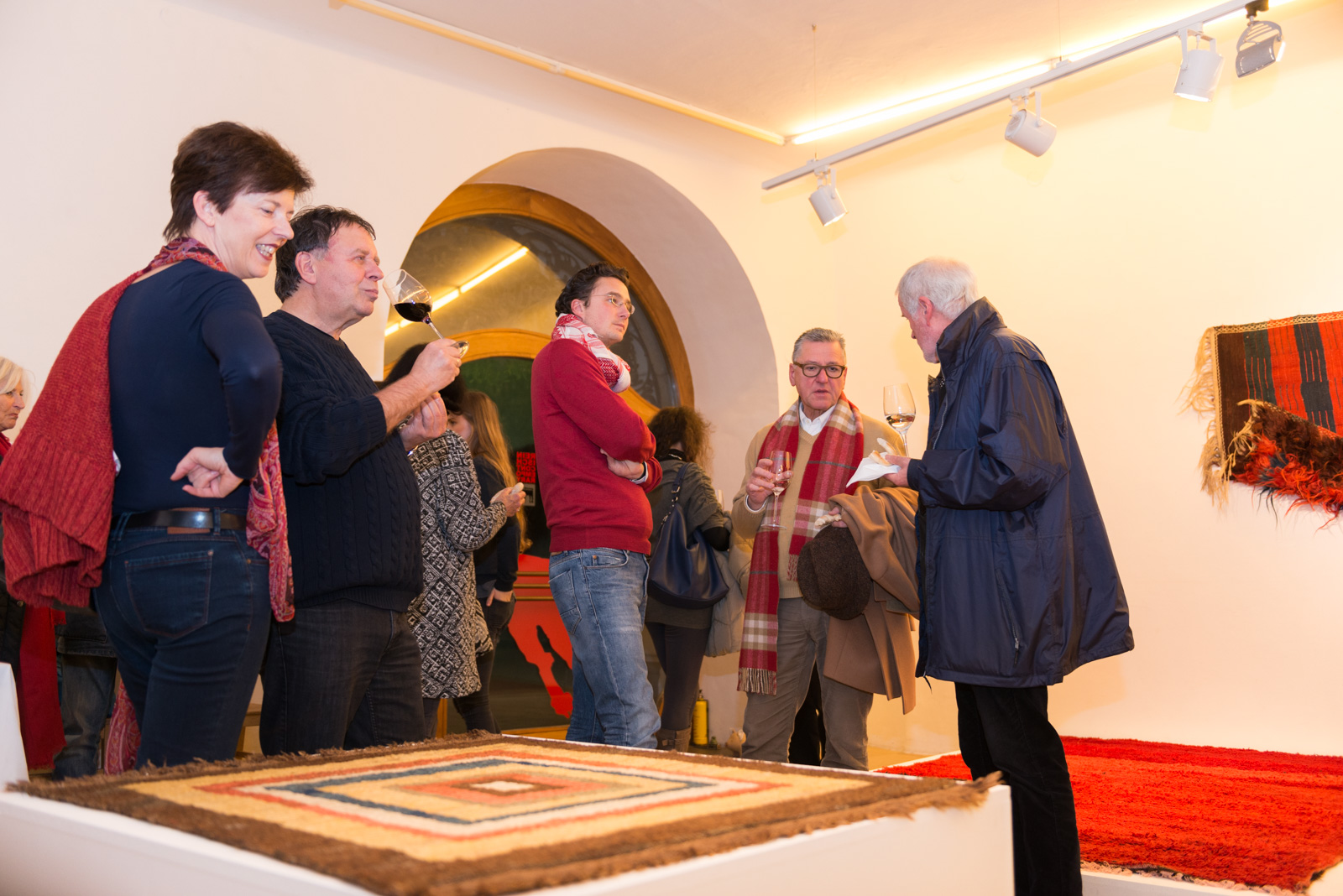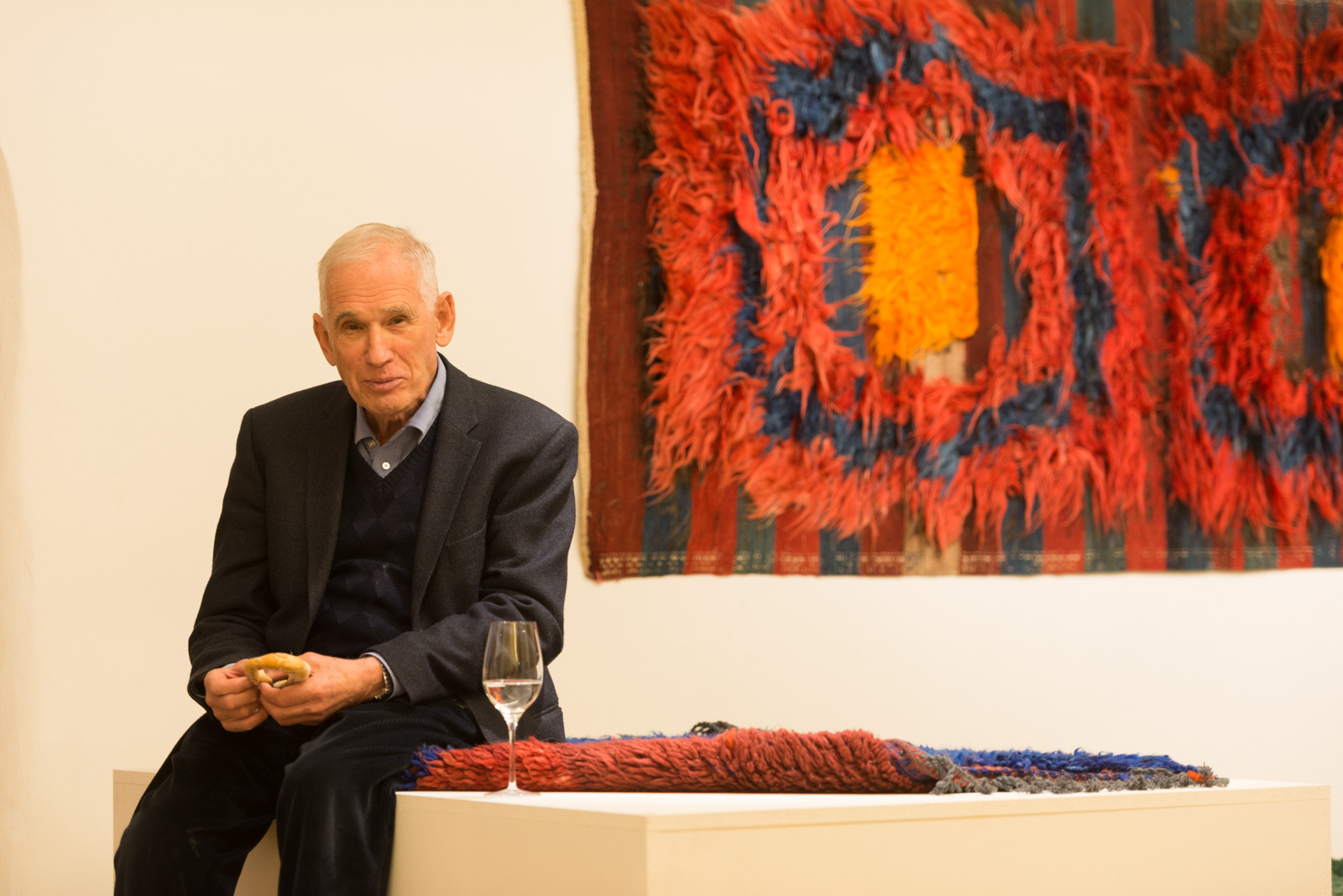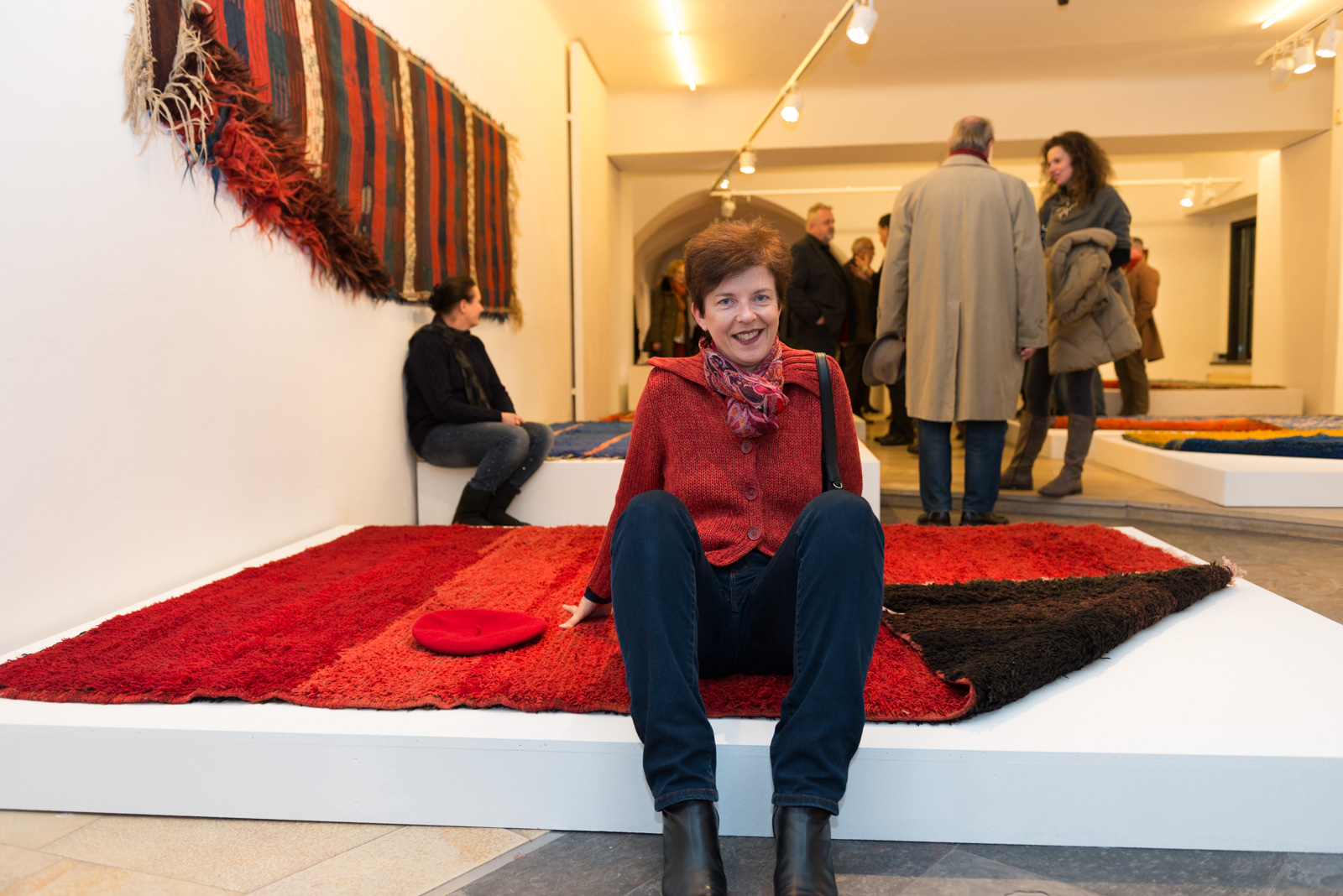Duration: 24th of November until 18th of Dezembe 2015
A reconstruction of their origin shows that rugs have always had multifunctional uses. While they have always been objects of a certain curiosity, they are also, in no minor way, related to a powerful pleasure of touch and sensation. Distance, a prerequisite of viewing an image, is replaced with tactile components that, thanks to the material texture, suggest notions of nestling and enwrapping. They refer to the human body in a particular, matter-of-course manner; even though, to this day, European modernity defines them exclusively as images.
It appears – especially in the case of double-sided rugs – that the artistic concept of the rug can only be fulfilled when purpose and function complement the objectives of decorative design. These pieces are temporary places of sensual experience, or rather, of a removal of boundaries, since a rug does not just point to itself, but also to the context in which it is used.
In its latest show, Reinisch Contemporary presents double-sided rugs whose mode of production results in two surfaces of equal value. In functional terms, these are sleeping rugs from remote mountainous regions. Such rugs are produced solely for personal use and essentially only occur in certain parts of Morocco and Iran. These very soft and often shag-piled products correspond closely to the prototype of the rug – the fur. Image quality is a given, but secondary. Practical usage accompanies the image’s visual character and adds to its transgression towards the artistic space. These rugs indicate, in a specific way, that European rug culture is limited, deriving only from carpeting and murals. In the nomad tent, the rug’s ancestral reality, however, the double-sided rug in particular is a primary object with differentiated functions and modes of operation.
Günther Holler-Schuster
